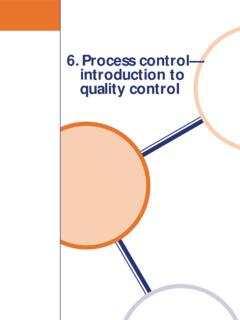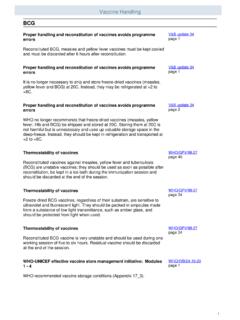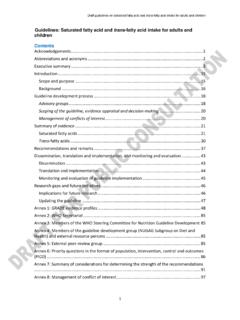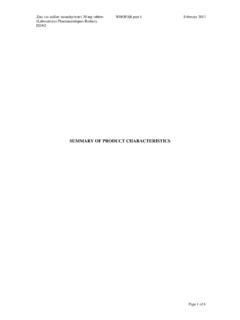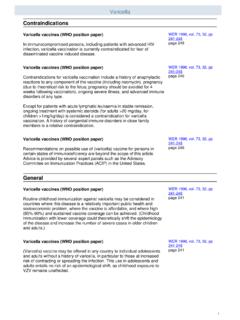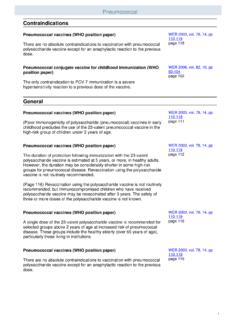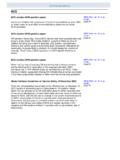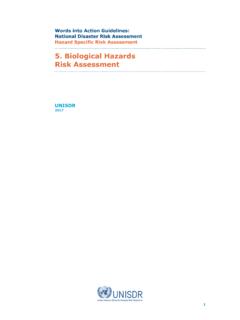Transcription of The Philippine Health Agenda for 2016 to 2022
1 The Philippine Health Agenda for 2016 to 2022 Esperanza I. Cabral, *Volume 54 Number 2 April-June., 2016 1 * Former Secretary of Health and Former Secretary of Social Welfare and at the Health for Juan and Juana, The Philippine Health Agenda for 2016 and Beyond. Forum held on May 4, 2016 at the Fuller Auditorium, AIM, Makati. Introduction Health has been a priority in the Philippine development Agenda since the adoption of the Millennium Declaration. Among the eight Millennium Development Goals (MDGs), there are three Health -specific goals for child Health (MDG4), maternal Health (MDG5), and combating HIV/AIDS, malaria , and other diseases (MDG6). In addition, the goal for reducing poverty (MDG1) includes nutrition targets, which directly impact Health ; and three other goals address social dimensions critical for improving Health education (MDG2), gender equality (MDG3), and environmental sustainability (MDG7). Given poor progress in achieving some of the above goals, they remain relevant beyond 2016 in the Philippines.
2 Articulation of Health goals for 2016 and beyond must also take into consideration the emerging as well as pervasive Health challenges of the country. These include the increasing prevalence of non-communicable diseases (NCDs) and injuries, and rising inequities in Health care and outcomes. Recognizing the fact that many nations did not achieve the MDGs and that other important Health issues have emerged, last September, 2015, the member states of the United Nations adapted the Sustainable Development Goals (SDGs) to replace the MDGs. Between 2016 and 2030, the same 195 countries that weighed in on the MDGs committed to achieving the SDGs. The principal Health -specific SDG is SDG No. 3: Ensure Healthy Lives and Promote Well-Being for All at All Ages. Within SDG 3 are nine major targets namely: 1. Reduce the global Maternal Mortality Rate (MMR) to less than 70 per 100,000 live births 2. End preventable deaths of newborns and under-five children 3.
3 End the epidemics of AIDS, tuberculosis, malaria , and neglected tropical diseases and combat hepatitis, water-borne diseases, and other communicable diseases 4. Reduce by 1/3 pre-mature mortality from NCDs through prevention & treatment, & promote mental Health & wellbeing 5. Strengthen prevention & treatment of substance abuse, including narcotic abuse & harmful use of alcohol 6. Halve global deaths & injuries from traffic accidents 7. Ensure universal access to Sexual & Reproductive Health (SRH) care services, including family planning, information & education, & integration of Reproductive Health into national strategies & programs 8. Achieve universal Health coverage (UHC), including financial risk protection, access to quality essential Health care services, & access to safe, effective, quality, & affordable essential medicines & vaccines for all 9. Substantially reduce the number of deaths & illnesses from hazardous chemicals & air, water, and soil pollution & contaminationHealth Agenda for 2016 to 2022 Within the framework of the MDGs and the SDGs, the Philippine Health Agenda can be summed as follows:Unfinished Agenda : High rates of avertable child, maternal and infectious disease illness and deaths the unachieved Health -Related Millennium Development Goals a.
4 As of 2015, the MMR was at 204 mothers dying per 100,000 live births a far cry from the MDG-MMR target of 52 per 100,000 by 2015 and even more than the MMR of 192/100,000 live births recorded at baseline in 1990. b. As of 2015, the Infant Mortality Rate (IMR) was 20 infants dying per 1,000 live births just shy of the MDG-IMR target of 19. We could have done better but neonatal mortality rate, a component of IMR did not go down, the reason being that maternal mortality has not been reduced. c. As of 2015, as many as 25 new cases of HIV/AIDS Special FeaturePhilippine Journal of Internal Medicinewere being reported to be diagnosed on a daily basis. In 2000, less than one new case of HIV/AIDS was being diagnosed every day. d. The prevalence of smear-positive Tuberculosis has increased from 246/100,000 population in 1990 to 273/100,000 population in 2008. The target for 2015 is Despite increased funding for Health -related MDGs over the last several years, the achievements are inadequate and uneven.
5 MDG 5 (Improve Maternal Health ) is the goal we were farthest from meeting and subsequently, the goal we did not meet. The current annual population growth rate of means that nearly two million Filipinos are added to the population every year. It is claimed that the country is making good progress on provision of antenatal care, facility-based delivery and delivery by skilled birth attendants, so one needs to ask, why then did we not meet our goal of reducing maternal mortality. Delivery in well-equipped birthing facilities by skilled birth attendants, as well as rapid access to lifesaving hospital services are essential to reducing maternal mortality. These require well-trained and responsive Health professionals, well-equipped facilities and the availability of needed medications, in addition to physical and financial access at the time of need. While hospital care is expensive, the social and economic costs of preventable maternal death can be far higher.
6 As important, and even more cost-effective than the provision of antenatal care, facility based delivery and delivery by skilled birth attendants, is the provision of family planning goods and services to those who require them but cannot afford to pay for them. There has been no progress in providing for the unmet needs for family planning of poor women until lately. Now that the Supreme Court has upheld the constitutionality of the Reproductive Health and Responsible Parenthood Law, government must exert mightily to provide the mandated reproductive Health services to all who need them but cannot provide for themselves. Progress in reducing HIV/AIDS, malaria , and other diseases (MDG6) is varied. While the Philippines attained some of the MDG targets for tuberculosis and malaria , we hold the dubious distinction of being one of only nine countries in the world where the incidence of HIV/AIDS is on the rise.
7 Most HIV/AIDS financing comes from external sources, which is declining and will likely drop significantly in the next two years. Not only do we need to pick up the slack, we have to devote more resources to combatting HIV/AIDS. Overall, the incidence and prevalence of tuberculosis 2 Volume 54 Number 2 April-June., 2016has not declined, even though the death rate associated with tuberculosis is going down. In addition, multi-drug-resistant tuberculosis (MDR TB) is becoming a major challenge. malaria prevalence and deaths have dropped significantly but programs for diagnostic testing, medicated bed nets and drug therapy need to be Infectious Diseases Communicable diseases remain a serious concern in the Philippines. While the country s disease burden shifts away from communicable to non-communicable diseases (NCDs), it is important to improve upon the gains made in controlling infectious diseases such as measles and not to ignore the threat of emerging communicable diseases such as Ebola, MERS-COV, bird flu and Zika infection.
8 NCDs mainly affect the elderly and adults. However, people of all ages will continue to suffer and die from communicable diseases. These are contained at considerable cost, and continuing investment is needed to control them. Resurging vector borne diseases, including dengue and leptospirosis, and most recently, Zika virus infection, are also substantial public Health problems. These diseases are spreading, driven partly by urbanization, land-use changes, and climate change. Natural disasters in the country also impact these resurging diseases. Flooding often contaminates drinking-water, increasing the transmission of waterborne diseases such as cholera, and hepatitis A. Antimicrobial resistance (AMR) is a growing challenge, largely due to inappropriate and irrational use of anti-infective drugs in humans and animals. This impacts our ability to treat many illnesses and results in new, powerful, and ever more dangerous infectious agents.
9 MDR TB and growing artemisinin-resistant malaria in the Philippines bear witness to this problem. Under-nutrition An important contributor to both NCDs and communicable diseases is under-nutrition and early stunting, which occur when children are deprived of the proper nutrients from the time of conception through the first two years of life (the first 1,000 days ). Up to now, one in four children under five years is underweight and undernourished. Undernourished and stunted children are less likely to complete schooling, join the workforce, or have future incomes equivalent to children who are not stunted. They are more likely to suffer later in life from NCDs, such as heart and kidney disease, and diabetes. Stunted girls are themselves likely to be mothers to underweight babies, potentially transmitting ill Health and poverty across Agenda Non-communicable Diseases (NCDs) and The Health Agenda 2016-2022 Cabral NCDs, including cancer, cardiovascular diseases, chronic respiratory diseases, diabetes, and accidental injuries are now the most frequent causes of death in the Philippines.
10 We face the double burden of communicable and non-communicable diseases (NCDs). NCDs are the predominant cause of mortality and communicable diseases are the predominant cause of morbidity in the country. Risk factors such as tobacco smoking, high blood pressure, high lipid levels and diabetes contributing to NCDs, are increasing substantially, calling for more attention to preventive Health care and Health promotion. While part of the increase in proportion of deaths is due to aging of the population and having more people at risk, it is also a result of rising rates of NCDs at younger ages. NCDs thus impact the working-age population and increase the economic burdens of the country. When it comes to injuries, rapid motorization and expansion of road infrastructure has led to an increase in traffic fatalities. Traffic-related deaths and injuries most often affect the poor as they are the ones who utilize the most dangerous type of motorized vehicles - Agenda - Health Inequity Health inequities are differences in Health status or in the distribution of Health resources between different population groups, arising from the social conditions in which people are born, grow, live, work and age.
